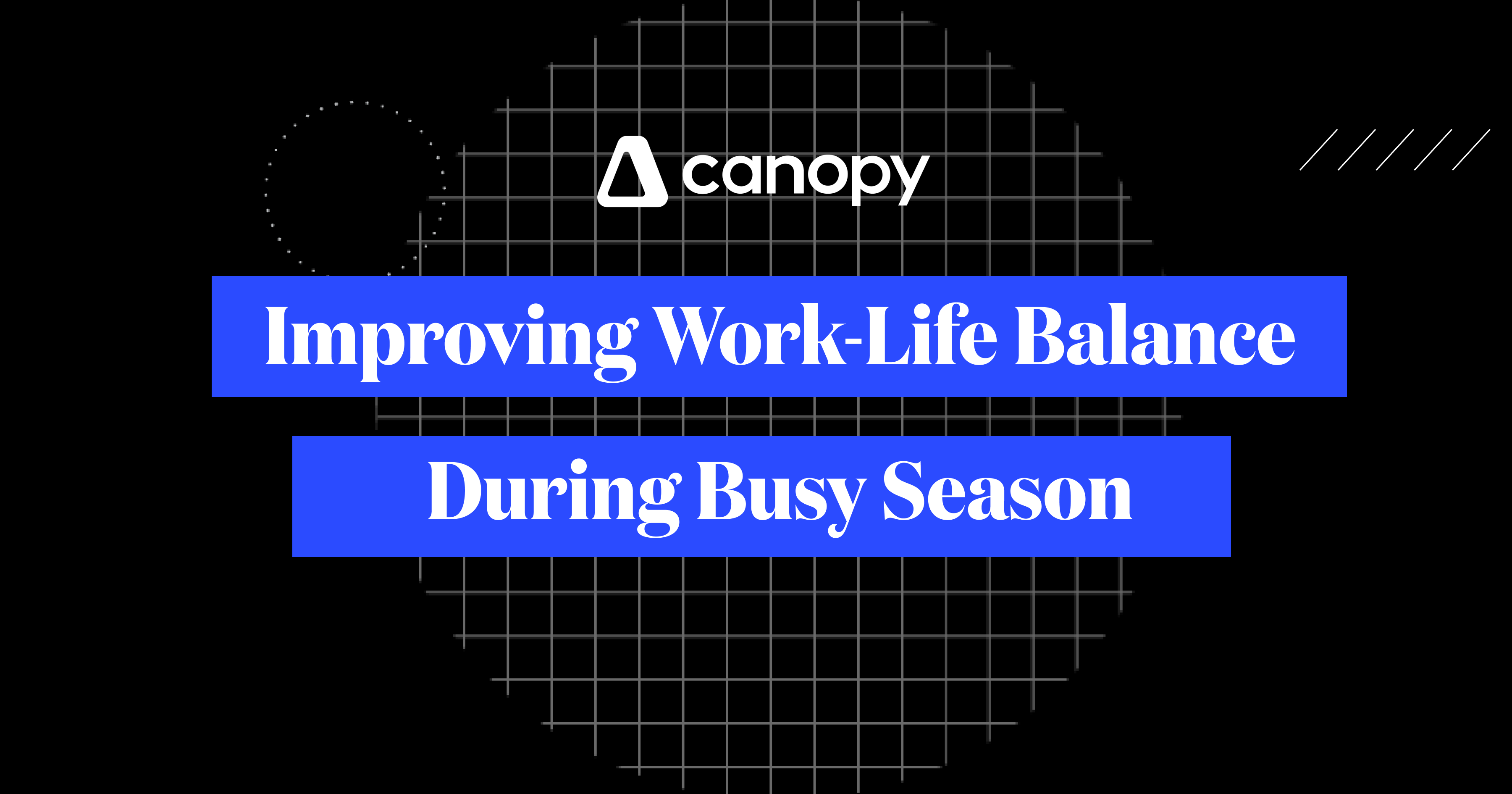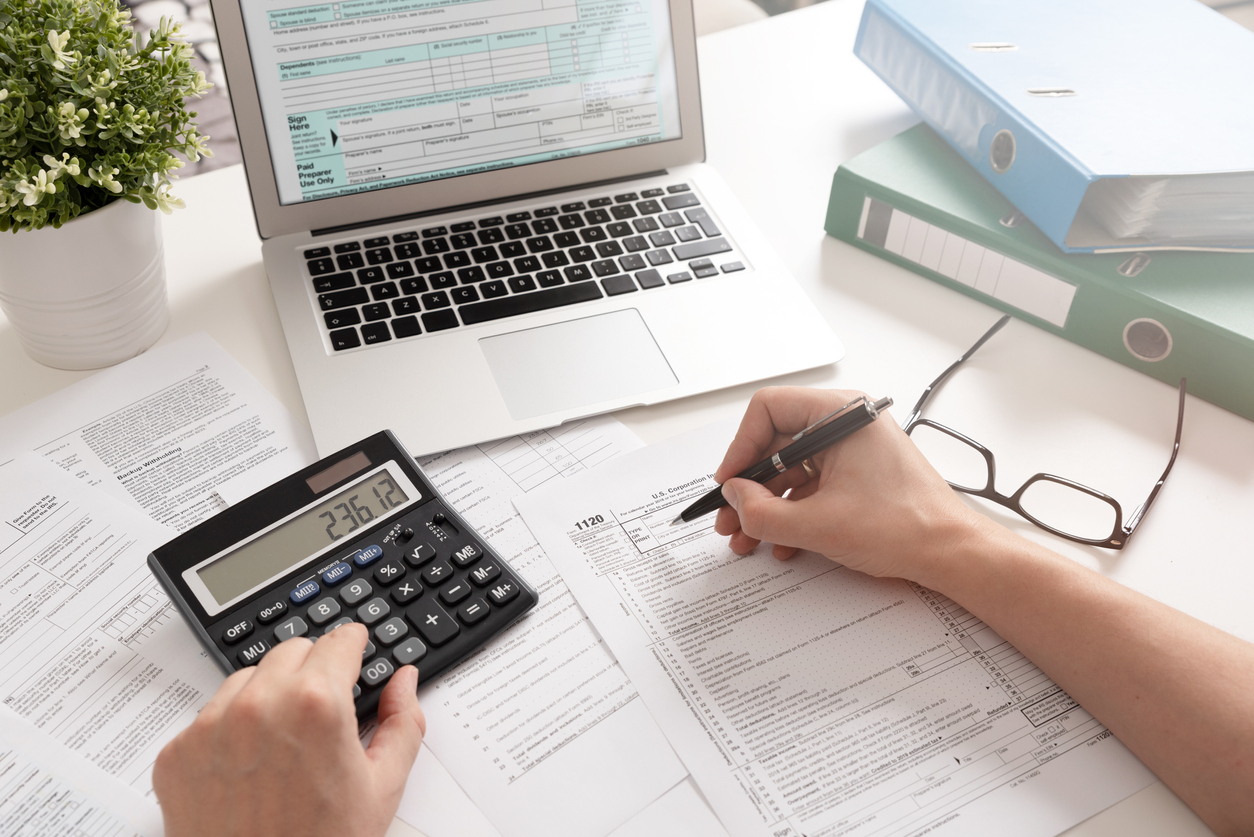When you think of tax season, does burnout come to mind? I haven’t conducted a formal poll, but my guess is the answer would be “yes” for many CPAs and accountants. In preparing to write this blog, I did what I usually do – start with the definition. According to Merriam-Webster there are two definitions, one as a verb and the other as a noun:
-
-
- Noun: exhaustion of physical or emotional strength or motivation usually as a result of prolonged stress or frustration
- Verb: to cause to fail, wear out, or become exhausted especially from overwork or overuse
-
These two definitions are so fitting! We work to the point of burnout (noun), and the work leads us to burnout (verb). It makes burnout sound inevitable during the busy season, but that doesn’t have to be the case.
When I was in practice, it wasn’t unusual for me to work 60-70 hours a week, even 80+ hours here and there – and that was 12 years ago! It was exhausting, draining, and taxing (pun intended). Today, everyone is busier and the work is more complex, so the busy season is more intense than ever. Back then, although we grumbled and complained about burnout there wasn’t a lot of discussion about how to avoid or manage it — it was just part of the narrative.
Today, we know better. By that, I mean we know that it is important to acknowledge burnout, recognize the toll it takes on our bodies & minds, and respect the challenges that toll brings. Of the many lessons learned navigating our way through Covid, an especially important one comes to mind as we head into tax season: it’s okay to not be okay.
While tax season doesn’t always lead to burnout, most of us will experience moments of overtiredness, low energy, and fatigue. It isn’t a question of if, but when. The key to managing this is to be proactive. When those moments of fatigue and overtiredness hit us, what are we going to do? Like most things, the key is intention. By thinking ahead and being intentional, we can set a plan for how we are going to manage those moments. To be fair, making a plan is the easy part. Actually sticking to the plan is a lot harder. So, have a plan for that, too. It might look something like this:
Step 1: Notice
Burnout doesn’t happen overnight. It creeps up on you. Adrenaline is very good at masking symptoms in the days leading up to big due dates, which can make the crash the next day feel particularly challenging. There are no universal burnout symptoms and each of us is different so it’s important to know which symptoms to watch for:
-
-
- Physical – feeling tired (low energy), excessive sleepiness, headache, body aches & pains (i.e., back, neck, etc.), difficulty sleeping, stomach or gastrointestinal distress
- Emotional – irritability, feeling trapped or defeated, sense of detachment, feeling like you are drowning
- Behavioral – procrastinating, skipping meals or overeating, short temper (i.e., snapping at people or impatience), reduced productivity (i.e., taking you longer to do routine things or repeating the same mistake)
-
Step 2: Acknowledge
This is the part where you interrupt denial or negative self-talk. For some of us, it may feel like a sign of weakness. For others, it may trigger negative self-talk around our abilities, sense of accomplishment, or anxiety about staying a step ahead of the work. Allow yourself to be not okay. Own the feelings. Don’t try to dismiss them. Otherwise, we are more likely to try to sweep everything under the rug and push through, which could make things worse.
Step 3: Pause
This is the part where you put down your pencil or mouse and step away from your desk. Remember that intention you set? This is where it shows up. Being intentional means having an actual plan of action when that ‘burnout’ moment comes. You don’t have to wait for it to arrive and you can take action when you see it looming. There are a number of things you can try. I suggest coming up with a few different things that have worked for you in the past. This isn’t the time to experiment or try something new. Here are a few examples:
-
- Taking a walk
- Deep breathing
- Meditating
- Going for a drive
- Listening to your favorite song, you might even dance or sing along (out loud, of course)
- Working out
- Watch an episode of your favorite series over lunch (for those of us that eat at their desk, notice I included myself in this group, this one's for you)
These breaks don’t have to be long — 5 or 10 circle breaths or a 10-minute walk might be just the thing you need. Next time, you might need a 30-minute meditation or hour-long cycling class. There is no right or wrong here. The key is to step away from your work and show yourself a little loving kindness.
Step 4: Reboot
This is the part where you get back to work. I don’t say this to be silly. Maybe it is just me, but I sometimes find it hard to jump back into a big project or heavy workload after a pause. There can be anxiety about lost time or regret for wasting time. These negative feelings can unravel the benefits of our pause work. The goal is to resume with a refreshed sense of readiness, a clear head, and a calm determination.
Burnout is very real and particularly fairly common during busy work cycles. Understanding how it shows up for you and having a few techniques at the ready can help shift the narrative from surviving to navigating the stresses of the busy season. Regularly practicing some of these techniques might even help prevent burnout. Setting an intention and taking the time you need to restore balance might just make this your least taxing busy season yet.
Looking for more content about accounting? Subscribe to our blog newsletter today.

Jina Etienne, CPA, CGMA, CDE® (Certified Diversity Executive), is CEO of Etienne Consulting, LLC, a DEI consultancy practice specializing in inclusive leadership, conscious communications, cultural sensitivity and awareness, empowering authenticity and fostering belonging. Her firm helps organizations identify then implement DEI initiatives, integrate DEI into their training and leadership development programs, and coaches firm leaders and business executives to help them lead inclusive organizations and high performing teams that support diverse talent in meaningful ways through self-awareness, intentionality and mindfulness. She brings a 32+ year career in the accounting profession as an entrepreneur, business consultant and C-Suite leader to her practice. After a 21 year career in public accounting, including 17 years running her own CPA firm, she shifted to serving the profession as a Director at the American Institute of CPAs then President & CEO of the National Association of Black Accountants, Inc. She went on to become the first national leader for D&I at Grant Thornton. She lives in Silver Spring, Maryland, with her husband, two sons, and Doug, their American bulldog.
READ MORE BY Jina






Get Our Latest Updates and News by Subscribing.
Join our email list for offers, and industry leading articles and content.